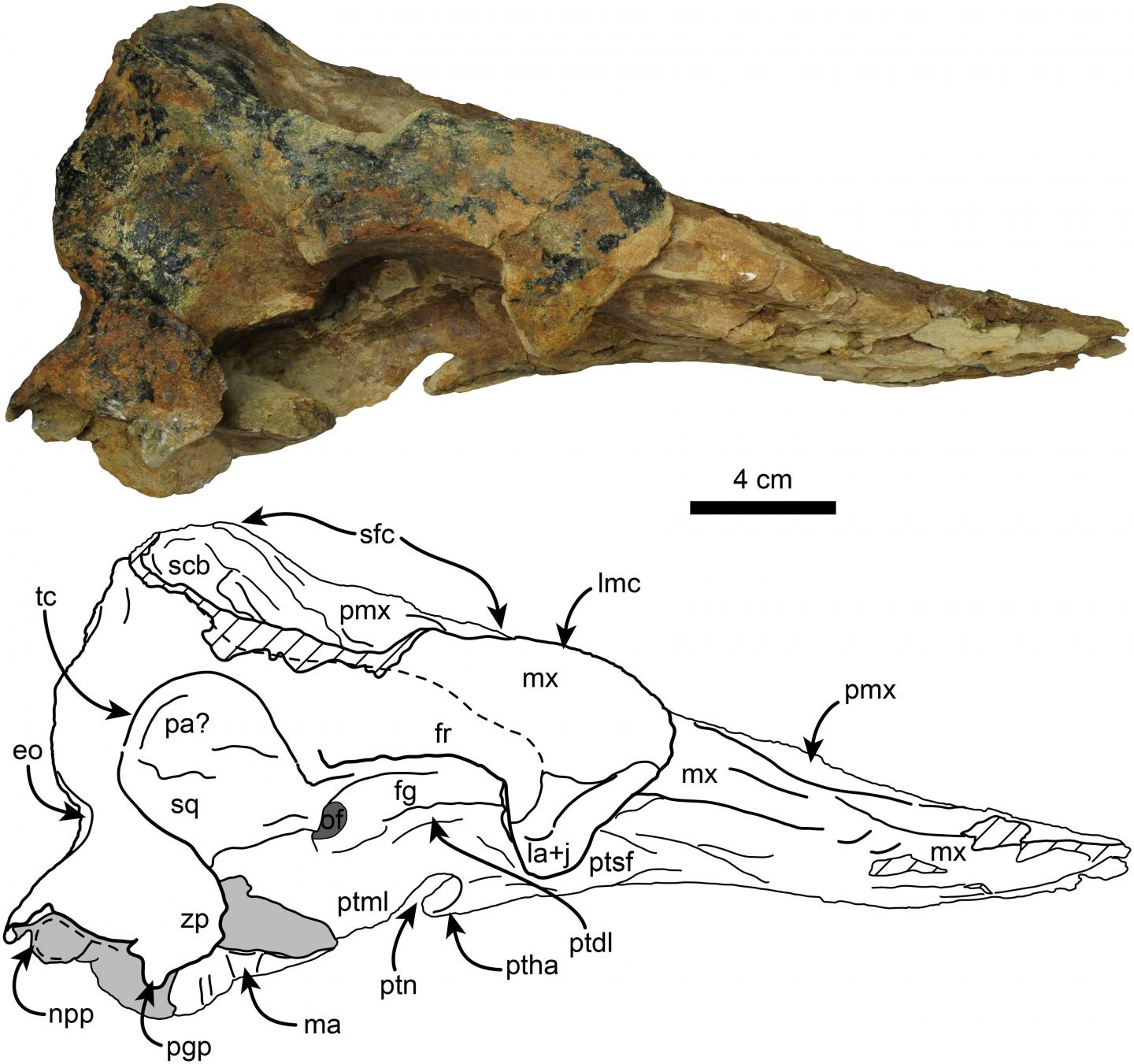
Rare fossils from extinct pygmy sperm whales found in Panama indicate the bone involved in sound generation and echolocation, the spermaceti organ, reduced in size throughout the whales' evolution, according to a study published April 29, 2015 in the open-access journal PLOS ONE by Jorge Velez-Juarbe from Natural History Museum of Los Angeles County and colleagues.
Many whales, dolphins, and porpoises have a long fossil record, which helps scientists understand their evolution. Yet, the limited fossil record of sperm whale and its kin, the smaller pigmy and dwarf whales, has limited our understanding of their evolution. The authors of this study have discovered a new species of extinct pygmy sperm whale. The new whale species, named Nanokogia isthmia after the Isthmus of Panama, is known from the well-preserved skulls of two individuals, which remains were unearthed at a sea cliff along the Caribbean coast of Panama and from rock layers, dated to about 7 million years ago.
The report reveals an unexpected level of complexity in the evolution of the spermaceti organ, an organ located within the whale head that plays a key role in the generation of sound, and in the whale's capacity for echolocation. The new fossils show that at one time, these small sperm whales had a much larger spermaceti organ, which got downsized at least twice during their evolutionary history. The reasons of this size reduction remain unclear; scientists hope to find more complete skeletons of Nanokogia and other closely related species to untangle the question.
"The new discovery gives us a better understanding of the ancient distribution of these poorly known relatives of the sperm whale," said Dr. Jorge Velez-Juarbe. "Previously we knew of similarly-aged pigmy and dwarf whales from Baja California and Peru, but this new fossil fills in an important geographic gap in the group's ancient distribution and natural history."
Source: PLOS
 Print Article
Print Article Mail to a Friend
Mail to a Friend
